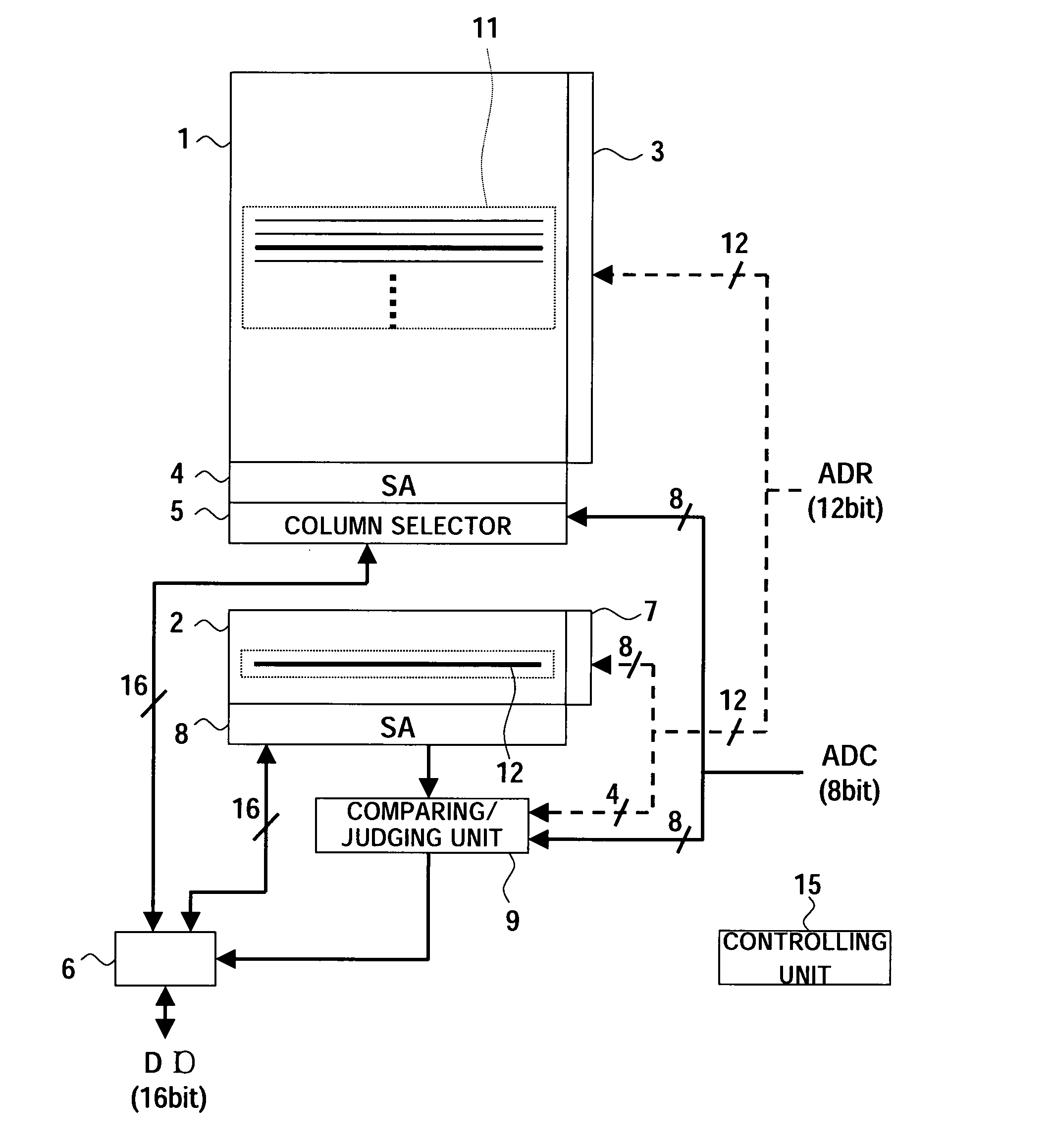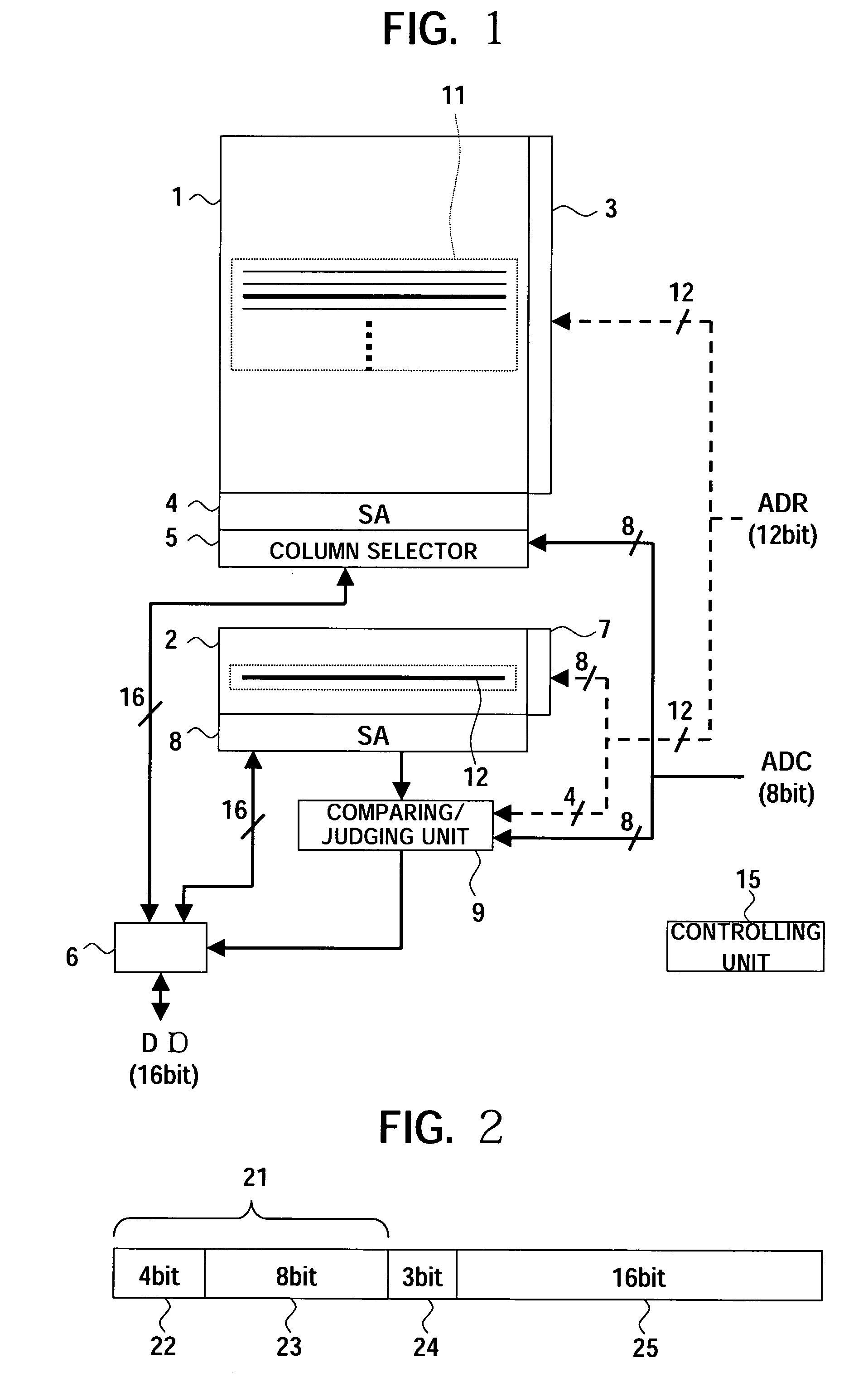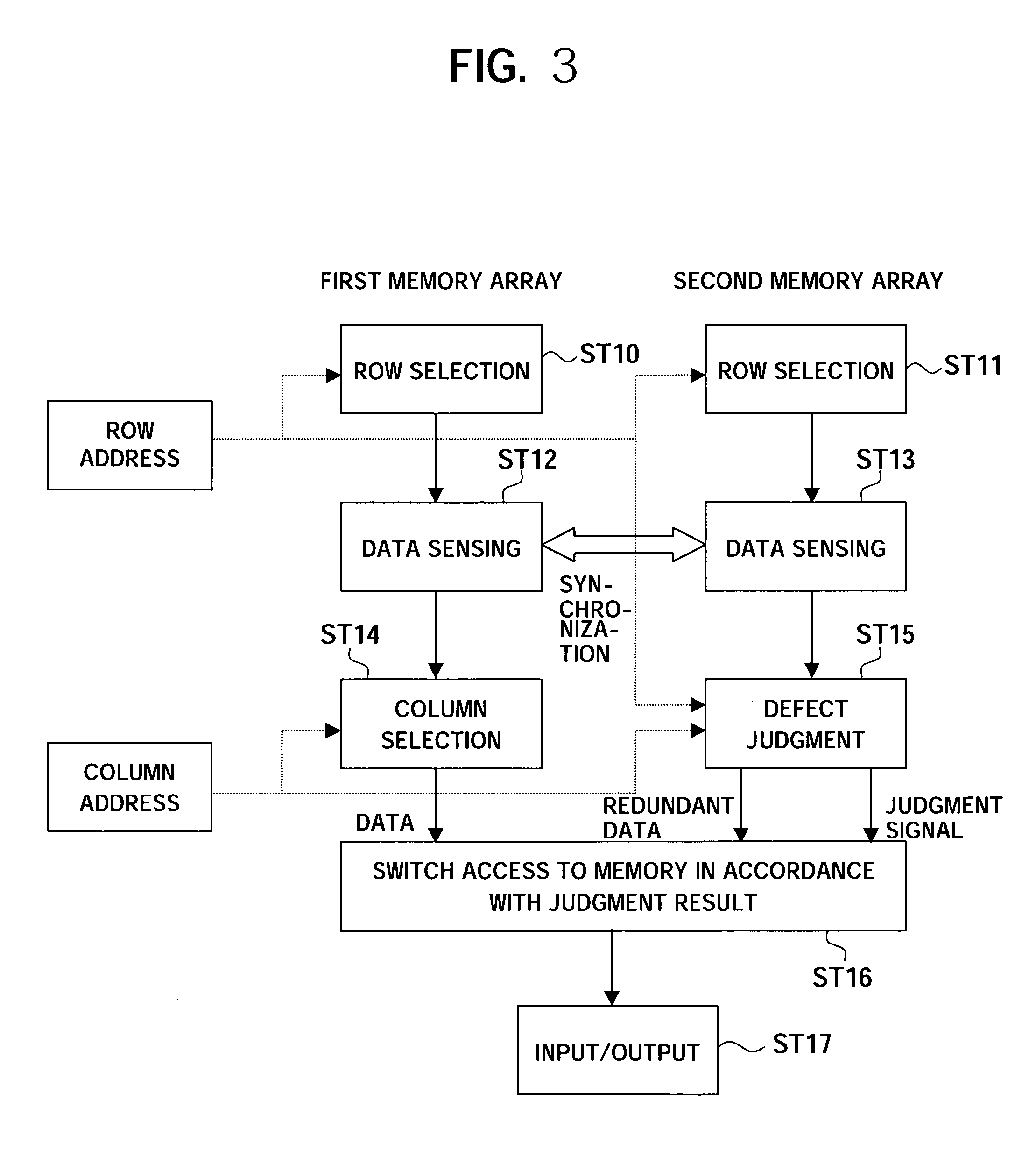Semiconductor memory device
a memory device and semiconductor technology, applied in the field of semiconductor memory devices, can solve the problems of high statistical probability of occurrence of cell defects accompanied by variations in production processes, many statistical cell defects explained above occurring at random in small units, and achieve the effect of suppressing any drop in access speed and efficient repair of defects
- Summary
- Abstract
- Description
- Claims
- Application Information
AI Technical Summary
Benefits of technology
Problems solved by technology
Method used
Image
Examples
first embodiment
[0047]FIG. 1 is a block diagram of an example of the configuration of a semiconductor memory device according to a first embodiment of the present invention.
[0048] The semiconductor memory device illustrated in FIG. 1 has a first memory array 1 and a second memory array 2, row decoder 3 and 7, a column selector 5, sense amplifiers 4 and 8, a comparing / judging unit 9, a selector 6, and a controlling unit 15. The first memory array 1 is an embodiment of the first memory array in the first aspect of the invention. The second memory array 2 is an embodiment of the second memory array in the first aspect of the invention. The unit including the comparing / judging unit 9 and the selector 6 is an embodiment of the access switching unit in the first aspect of the invention. The controlling unit 15 is an embodiment of the controlling unit in the first aspect of the invention.
[0049] The first memory array 1 is the main memory portion of the present semiconductor memory device including usual...
second embodiment
[0094] Next, a second embodiment of the present invention will be explained.
[0095] In the semiconductor memory device shown in FIG. 1, only one memory group can be utilized for the repair of defects in each memory region (memory region of 16 word line groups 11) of the first memory array 1. Contrary to this, in the semiconductor memory device according to the present embodiment, N (N indicates a natural number of 2 or more) number of memory groups can be utilized for the repair of defects in one memory region.
[0096] The semiconductor memory device according to the present embodiment, in the same way as the semiconductor memory device shown in FIG. 1, has a first memory array 1, a second memory array 2, row decoders 3 and 7, a column selector 5, sense amplifiers 4 and 8, a selector 6, and a controlling unit 15.
[0097] However, in the present embodiment, each word line of the second memory array 2 has N number of memory groups (hereinafter referred to as a “memory set”) having the c...
third embodiment
[0114] Next, a third embodiment of the present invention will be explained.
[0115] In the semiconductor memory devices according to the first and second embodiments, when there is even 1 bit of a memory cell having a defect included in 1 word (16 bits) of memory, all memory cells of the 1 word are replaced by 1 word of the redundant memory. On the other hand, in the semiconductor memory device shown in FIG. 5 explained next, the memory cell having the defect in the 1 word is further designated by the address stored in the memory group, and this defective memory cell is replaced by 1 bit of a redundant memory cell.
[0116]FIG. 5 is a block diagram of an example of the configuration of the semiconductor memory device according to the third embodiment of the present invention. The same notations as those of FIG. 1 indicate the same components.
[0117] Namely, the semiconductor memory device illustrated in FIG. 5, in the same way as the semiconductor memory device shown in FIG. 1, has a f...
PUM
 Login to View More
Login to View More Abstract
Description
Claims
Application Information
 Login to View More
Login to View More - R&D
- Intellectual Property
- Life Sciences
- Materials
- Tech Scout
- Unparalleled Data Quality
- Higher Quality Content
- 60% Fewer Hallucinations
Browse by: Latest US Patents, China's latest patents, Technical Efficacy Thesaurus, Application Domain, Technology Topic, Popular Technical Reports.
© 2025 PatSnap. All rights reserved.Legal|Privacy policy|Modern Slavery Act Transparency Statement|Sitemap|About US| Contact US: help@patsnap.com



